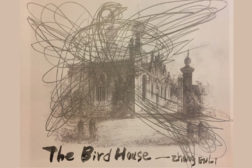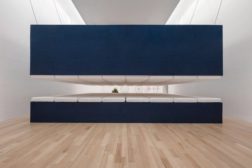Lecture: Lacing Buddhist Threads in Contemporary Art
Witte de With for Contemporary Art
Time: February 2nd 2013, 2:00 pm
Location: Witte de Withstraat 50, 3012 BR Rotterdam, Netherlands
The event Lacing Buddhist Threads in Contemporary Art is organized in light of Paola Pivi’s Tulkus 1880 to 2018, as a transverse event that joins together a set of thinkers in an effort to draw out just a few rich strands from art and culture, which bind Buddhist history.
Curator Davide Quadrio will lead the audience through the visual narrative depicted in the 17th century Tibetan thangka (painting) portraying Tsuglag Gyatso, the Third Pawo Rinpoche (c. 1567–1630), which references the origin of the tulku photographic portrait tradition and hangs in the Witte de With as a central focal point for the general exhibition.
Expanding on the contemporary history of Buddhism in the West, artist Louwrien Wijers, in conversation with art historian Arnisa Zeqo, will trace early parallels between pre-Christian iconography and the Buddha’s image, punctuated by personal reflections on Wijers’ introduction of Tibetan Buddhism to Joseph Beuys and the European art scene in the 1980’s.
Admission fee: €5/€3 with discount
For more information on the lecture, please see here.
Participants:
Davide Quadrio
Louwrien Wijers
Arnisa Zeqo
About Tulkus 1880 to 2018
Aimed at creating a complete collection of portraits and basic information on all the tulkus of the world—who in Tibetan Buddhism are the recognized reincarnations of previous Buddhist masters—from the beginning of photography until today, from all the schools of Tibetan Buddhism and Bon, and from all the areas of the world where this religion is practiced, this growing survey has until now collected over 1100 photographic portraits.
Manifesting in a stunning array of forms, from high production color prints to inexpensive photocopied reproductions, and in scales ranging from pocket-size to large format, these images are the same ones commonly treasured in monasteries, hung in private households or shops, or collected by the faithful. These photographs are considered holy by the believers.
Tulkus 1880 to 2018 uncharacteristically lays bare these objects of specific veneration within the consciousness of a religiously plural and often secular art institution; an institution that conversely is not known for presenting nominally sacred objects to its audience, and is itself enshrined within a long history of aesthetic discourses that attempt to establish a ‘visual neutrality.’
For more information on Tulkus 1990 to 2018, please see here.


